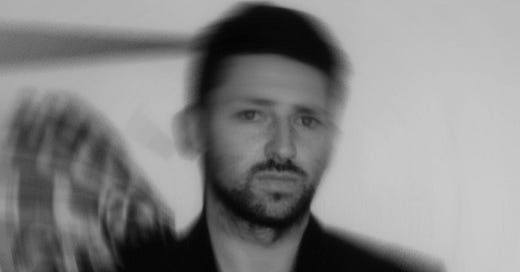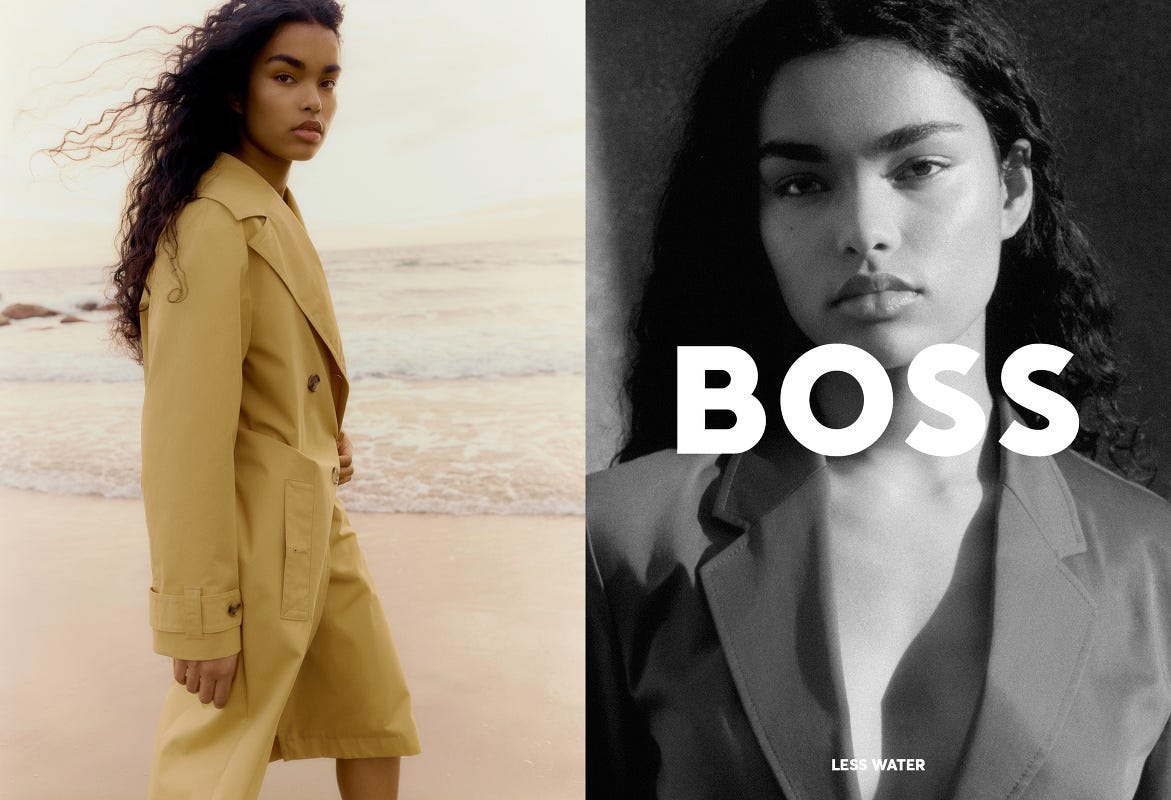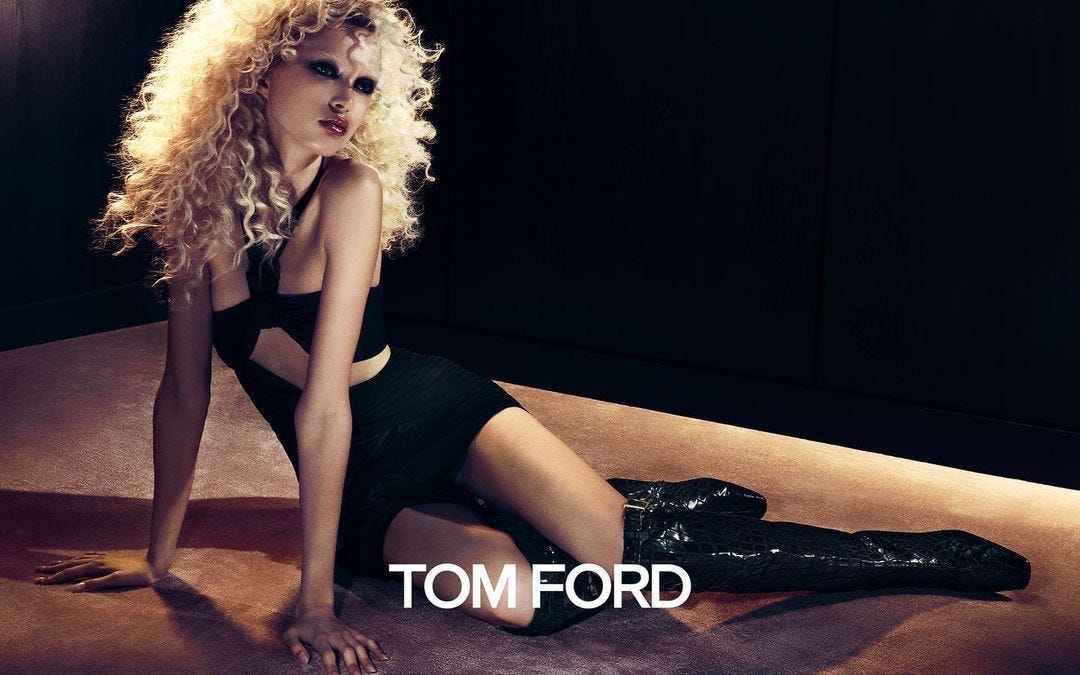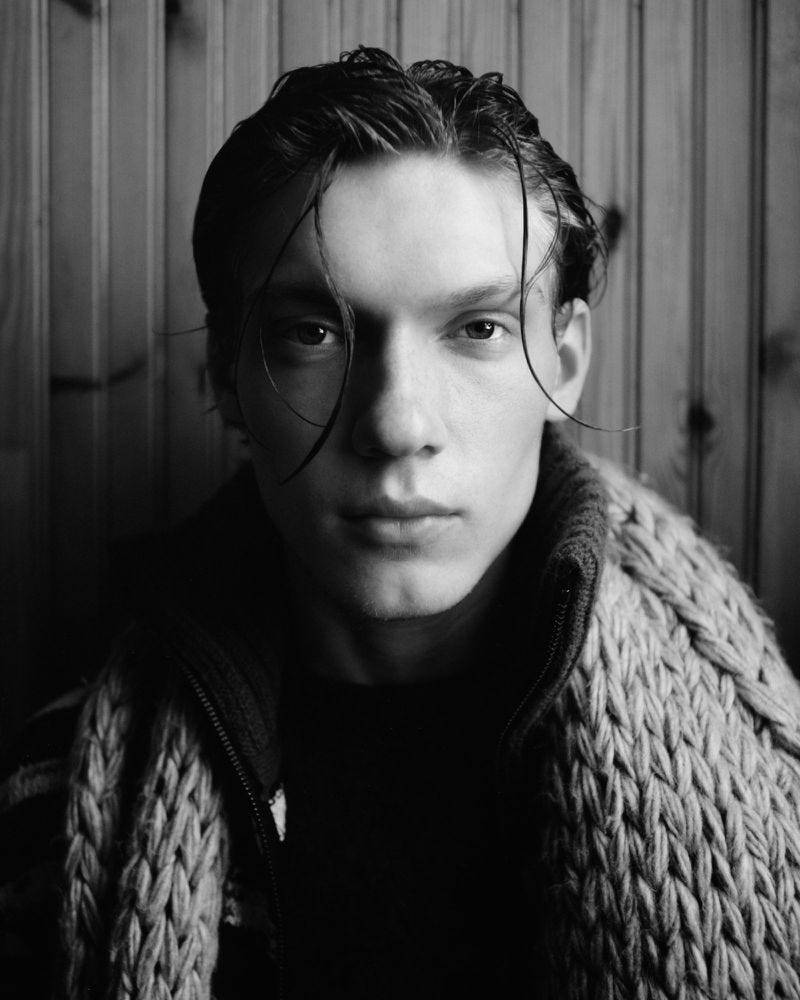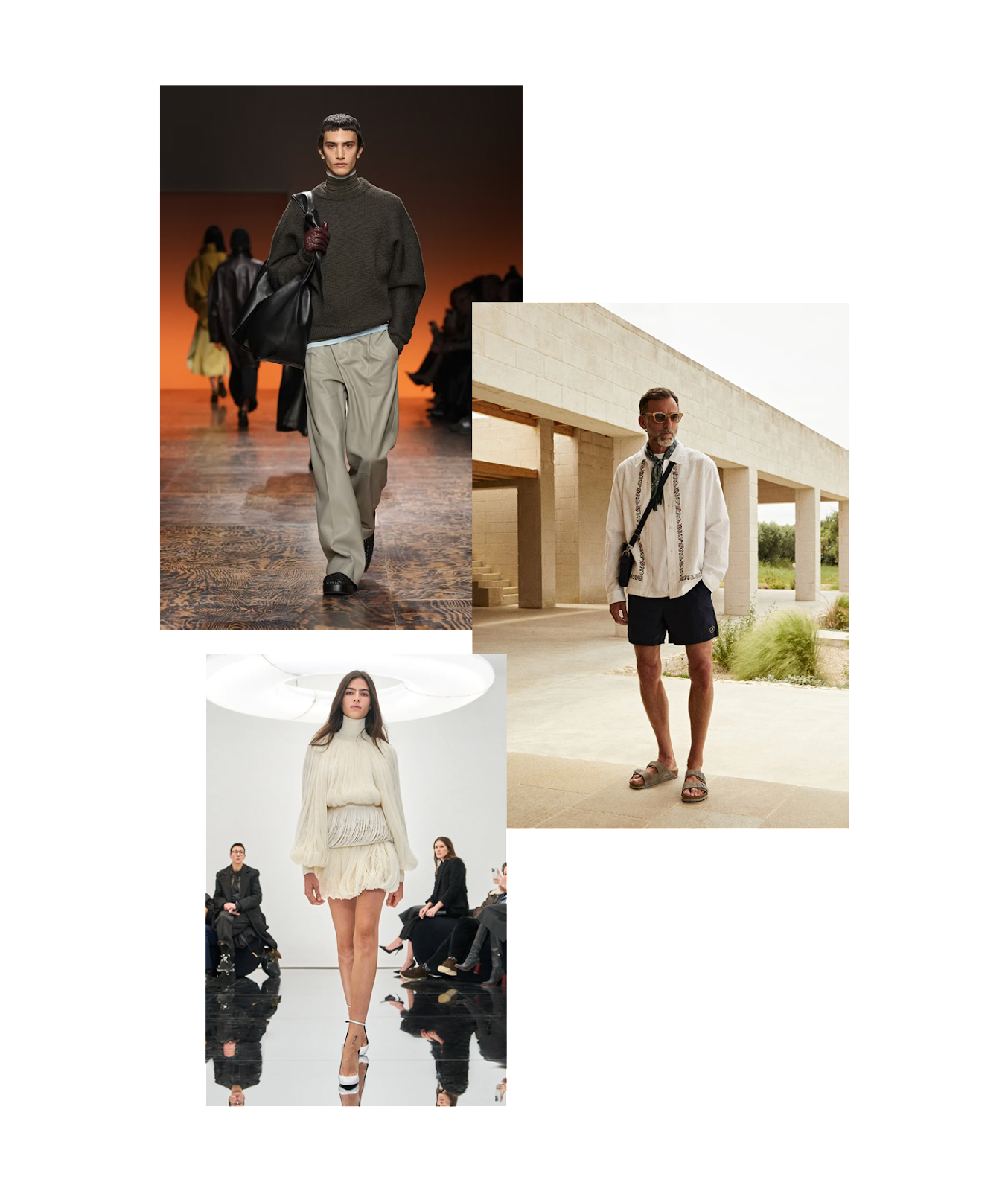Something to aspire to with Edward James Lee (@edwardjameslee).
Leaving a coveted role at Tom Ford as Global Image Director to go independent, top Creative Director Edward James Lee reflects on aspiration, emotion and doing work to inspire his 13 year old self.
With his hair swept back and exuding an easy nonchalant cool, it’s hard to believe that Edward James Lee was ever anything other than the polished creative director he is today. At only 30, Lee’s spent the last decade crafting visuals for brands across the spectrum of fashion from high street to high end.
Recently departing from a stint as Global Image Director of Tom Ford, Lee now finds himself on the precipice of a new chapter building an independent consultancy in Dubai.
“There’s a Western preconception of Dubai as shallow or superficial, but all of that fell away as soon as I arrived. It’s electric, and there’s a massive creative community here.”
Yet, things weren’t alway so glamorous for the young creative. “I grew up in a small town super devoid of creativity” reminisced Lee about an upbringing just outside of Birmingham that now seems a world away. “If you weren’t into football, there wasn’t much for you.” he remarked.
For Lee, who discovered fashion initially through a love of magazines as a teenager, fashion was initially a way of finding community; a window to the outside world beyond what he knew growing up. “I wanted to be part of the stories, the parties, the shoots” he mused. Yet, the more he delved into the industry the more he became fascinated by the psychology behind the images that enamored him.
It’s perhaps his perspective initially as an outsider that explains why Lee is able to so masterfully capture the aspirational nature of fashion through images. “It’s still something I try to insert into what I do - the emotional connection that inspires people”. This attitude’s palpable. To view Lee’s images is to be immediately seduced by a heightened reality of luxury - something more real than real.
Still, despite the rarefied world he inhabits, Lee himself remains down to earth and free of pretense - a genuine nice person. Taking the time to pause for a moment Edward sat down with me in a candid conversation to reflect on his path so far, how technology has evolved the practice of art direction and ultimately unravel what it means to be an Art Director in 2024.
Hey, it’s been a minute! How are you finding your move to Dubai?
It’s good! It kind of feels a little like LA, the culture, the energy, I know how to navigate it so coming in, it feels familiar and not too overwhelming. Honestly though, I’ve just been all out consumed with work so I haven’t done too much exploring. Hopefully in a few weeks when it calms down a bit, I’ll actually get the chance to explore.
You’ve had quite a journey from growing up in a small town to now having worked with some of the biggest names in the business, but it hasn’t been completely straight forward. Could you tell us a little bit about how you got to where you are today?
To go all the way back, I grew up on the outskirts of Birmingham. It was very working class and wasn’t a particularly inspiring place creatively. In fact, my first taste of fashion was through a paper route I had when I was 13. It was how I discovered magazines like Vogue, GQ and Harpers Bazaar and I just became obsessed. Still to this day, I’ve got such a huge collection dating back to when I was a teenager.
I was so attracted not just to the clothes but the images and the typography. At the time, there weren’t really any insights or opportunity that made me realise I could pursue a career in fashion. Everyone around me was very ‘meat and two veg'. They studied traditional academic subjects or became a grafter. My parents made me study maths and physics but this route was not for me. I was thinking about fashion magazines.
My parents made me study maths and physics but this route was not for me. I was thinking about fashion magazines.
There were a few false starts. After secondary school, I started doing an Art Foundation degree in oil painting because I wanted to do something creative but I didn’t know that I could have the career I wanted in magazines. After that, I went to university to study Fashion Communication but because it was more about PR and business strategy, it still left me cold. It wasn’t until I ended up starting studying graphic design that it all clicked together though once it did, I knew where I wanted to take my career and I was 200% focused.
What was it about the magazines and the fashion industry that caught your attention?
At first the emotional connection was through the sense of community I started to build. When I found a few other weirdos where I lived that also liked fashion, we were able to connect on things like photographers and brands, but the more I delved into the industry, the more I became interested in what lied behind the images.
It became more than the clothes. It was the campaigns, the narratives - how they compel you to be the version of yourself you want to be.
It became more than the clothes. It was the campaigns, the narratives - how they compel you to be the version of yourself you want to be. When you’re a teenager going through the motions of adolescence, you’re insecure as sh*t, a new T-Shirt could make you feel like the dogs bollocks. It’s that quality that fascinated me.
Perhaps it was a juvenile outlook but I still stand by it. When I put on a certain suit or certain piece, it makes me want to be a better version of myself. Doing this through the lens of a brand is obviously capitalistic but I still think there’s something powerful about the way it makes you feel.
As an Art Director, often you’re moving across different contexts and mediums. What do you think the through-line is with your approach?
I get this question a lot but truthfully, I approach every project the same way. I want an emotional connection for the audience and a positive affirmation whether it’s a small social shoot or a big global campaign film. My red thread is to create a romance or ambiance that feels emotional and subtly connects with audiences even if they’re not consciously aware of it. It could be through something small like a tweak in the lighting or a particular crop or composition. For me, I think it’s how good brands and good work resonates with people. When there’s so much content out there, it’s hard to stand out so really the only way you can set yourself apart is through real emotional connection.
Interesting point you make about content glut. When your work is consumed so much of the time through screens and content’s churned out faster and faster, does this affect the type of work you produce?
100%. I would love to say that it doesn’t and strong iconic work isn’t affected by platforms like TikTok but I think that would be a very dated outlook. It’s better to think of new platforms as an invitation for creative problem solving. Obviously, there’s technical elements that are different. For example, today when we’re cutting films they are a lot shorter, in the past we might have fashion films that felt like short movies going of three, four, five minutes at a time. Still, technological changes keep us on our toes and I think that’s ultimately a good thing.
Any thoughts on AI/AR?
I think both AI and AR are very interesting but we should be wary of hype. With AI, I can see it changing a lot in the design process. On the other hand with AR, I think there’ll be a flash in the pan of big brands doing campaigns and stories around it but the real longevity component will be in how it evolves traditional campaigns and photographic media. Ultimately our relationship with the product is so tactile and romantic no amount of CGI can replicate that, and that’s something that we need to keep in mind.
Ultimately our relationship with the product is so tactile and romantic no amount of CGI can replicate that, and that’s something that we need to keep in mind.
We’re seeing a lot of product becoming marketing in itself. For example, with MSCHF’s ‘big red boots’. How do you think the evolution of product as marketing has affected your work?
They're definitely clever, but I don't see them altering the role of an Art Director; they just shift the focus of the brief. Ultimately, we ask what a brand wants to achieve from a project - whether it's social engagement, sales, or something else. These products serve as a unique form of advertising, aimed at boosting social interaction. While controversial products might not fly off the shelves, they excel at going viral and capturing attention. When working with these products, it means the brief will usually be to ramp up engagement.
We’ve seen a lot of creatives start to branch out into other fields like starting their own fashion brands, or creating magazines. Do you ever see yourself expanding your scope?
I think if I’m not challenged I lose interest and I go onto the next thing. Right now, I’m happy staying in this line of work because every project feels different and the nature of the industry is constantly evolving which keeps me stimulated. That said, the minute I start feeling unchallenged, I’ll do something else. I’ve always got a million pipe dream ideas cooking in the background and there’s plenty of other avenues within fashion that I’d like to explore. We’ll see.
Your new venture is in the Middle East. How are you feeling about the market there?
I’ve been fortunate enough to work with global brands that have had a huge market and presence in the Middle East and Asia. It’s an interesting challenge to work with different cultural constructs. There’s different social parameters to work with here and different interpretations of what defines luxury. I wanted to come out here with a great sense of exploration and to see what the universe brings me. I want to create work that would inspire the teenage me.
Virgil Abloh said it best, when he said “Everything I do, I do for my 17 year old self”.
You mentioned before being 13 and wanting to be at the events you saw in the magazines. Just last week, you were Creative Directing a show where Naomi Campbell was one of the guests of honour. How do you feel about it looking back at your 13 year old self?
Looking back, I don’t think I’ve reached a point where I can be happy for the 13 year old version of myself because the career he wanted doesn’t exist anymore. I think that's a good thing though. The moment you think you’ve made it or feel accomplished is the moment you stop pushing yourself and lose passion and romance for what you do.
EDWARD’S TASTE
What’s on the playlist? Beanie by Chezelle
What are you reading at the moment? ‘Document’ and Double. Both great, independent fashion magazines making really original and interesting work.
Where do you like hanging out? I find inspiration through galleries like 180 Strand or Tate Modern. We were saying earlier end products are so physical so it’s nice to be in a physical space. I’m also enjoying how Matthieu Blazy is doing the design in Bottega stores.
Any garms? Really liking Bottega at the moment and surprisingly Kith. My favorite brand is Alaia. They don’t even do mens. I’d love to have it just to hang it up on my wall like art.
FOLLOW EDWARD
Web: edwardjameslee.com
IG: @edwardjameslee


